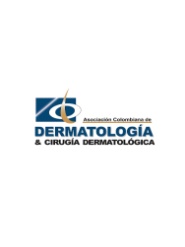Estrés Oxidativo y Piel.
Keywords:
Estrés oxidativo, antioxidantes, radicales libresAbstract
Estrés oxidativo, se define como un estado en el que la generación celular de radicales libres sobrepasa la habilidad de las células para contrarrestarlos.
En los últimos años se ha investigado bastante al respecto, por encontrarse relacionado con diferentes patologías, entre ellas, enfermedades dermatológicas, y ha hecho que se destaquen sustancias conocidas como antioxidantes, las cuales se empiezan a tener en cuenta en el arsenal terapéutico.
Author Biography
Adriana Wagner, Universidad del Valle
Residente III Dermatología, Universidad del Valle, Cali, Colombia.
References
2. Boh. Role of reactive oxygen species in dermatologic disease. Clin.ics in Dermatology 1996; 14: 343-352.
https://doi.org/10.1016/0738-081X(96)00064-8
3. Darr and Fridovich. Free radicals in cutaneous biology. J lnvest Dermatol 102 : 671-675, 1994.
https://doi.org/10.1111/1523-1747.ep12374036
4. Pugiese. The skin, free radicals, and oxidative stress. Dermatol Nurs 7(6) :361-371, December 1995.
5. Fridovich l. Superoxide dismutases, an adaptation to a paramagoetic gas. J Biol Chem 264: 7761- 7764, 1989.
6. Meister A. on the antioxidaot effects of ascorbic acid and glutathione. Biochem Pharm 44: 1905-1915, 1992.
https://doi.org/10.1016/0006-2952(92)90091-V
7. Leirisalo Repo M. the present knowledge of the inflarnmatory process and the inilammatory mediators. Pharmacol Toxico!. 1994 ; 75 suppl 2 : 1-3.
https://doi.org/10.1111/j.1600-0773.1994.tb01988.x
8. DeForge LE et al. Regulation of interleukin 8 gene expression by oxidan! stress. J Biol Chem. 1993 Dec 5; 268(34): 25568-76.
9. Parks DA, et al. Role of oxygen-derived free radicals in digestive tract diseases. Surgery. 1983 Sep; 94 (3): 415-22.
10. Reilly. Pharmacologic approach to tissue injury mediated by free radicals and other reactive oxygeo metabolites. Am J Surg 161 :488-503, 1991.
https://doi.org/10.1016/0002-9610(91)91120-8
11. Shindo Y, et al. Aotioxidant defense mechanisms in murine epidermis and their responses to ultraviolet light. J lnvest Dermatol 100 :260-265, 1993.
https://doi.org/10.1111/1523-1747.ep12469048
12. Black H. potential involvemeot of free radical reactions in ultraviolet light-mediate cutaoeous damage. Photochem photobiol 46 :213-221, 1987.
https://doi.org/10.1111/j.1751-1097.1987.tb04759.x
13. Applegate L., Frenk E. ceUular defense mechanisms of the skin against oxidan! stress and in particular UVA radiation. Eur J Dermatol 1995; 5: 97-103.
14. Shindo Y, et al. Dose-response effects of acute ultraviolet irradiation on antioxidants and molecular markers of oxidation in murine epidermis and dermis. J Invest Dermatol 102: 470 - 475, 1994.
https://doi.org/10.1111/1523-1747.ep12373027
15. Lisitsyna TA, et al. Active forms of oxygen and pathogenesisof reumathoid arthritis and systemic lupus erythematosus. Vestn Ross Akad Med Nauk. 1996(12) :15-20. Abstrae.
16. Jurkiewicz, et al. Effect of topical app]jed tocopherol on ultraviolet radiation-mediated free radical damage in skin. J Invest Dermatol 104: 484 - 488, 1995.
https://doi.org/10.1111/1523-1747.ep12605921
17. Pence, et al. Effects of dietary selenium on UVB-induced skin carcinogenesis and epidermal antioxidant status. J lnvest Dermatol 102: 759 - 761, 1994.
https://doi.org/10.1111/1523-1747.ep12377571
18. Eberlein-Ktinig, et al. Protective effect against sunburn of combined systernic ascorbic acid and d-a-tocoferol. JAAD 38 : 45-48, 1998.
https://doi.org/10.1016/S0190-9622(98)70537-7
19. Woollons A, et al. Iduction of mutagenic DNA damage in human fibroblasts after exposure to artificial tanning lamps. British J Derm. Nov 1997; 137 (5): 687-92.
https://doi.org/10.1046/j.1365-2133.1997.19362051.x
20. Bechara EJ. oxidative stress in acute intermittent porphyria aod lead poisoning may be triggered by 5-aminolevulinic acid. Braz J Med Biol Res. 1996 Jul: 29(7) :841-5 l.
21. Boffa MJ, et al. A double-blind, placebo-controUed, crossover tria! of oral vitarnin C in erythropoietic protoporphyria. Photodermatol Photoimmunol Photomed. 1996 Feb; 12(1): 27-30.
https://doi.org/10.1111/j.1600-0781.1996.tb00240.x
22. Masaki H, et al . generation of active oxygen species from advanced glycation end-products (AGE) under ultraviolet light A (UVA) irradiation. Biochem Biophys Res Commuo. 1997 Jun 18 ; 235(2) : 306-310.
https://doi.org/10.1006/bbrc.1997.6780
23. Benke PJ. Molecular, metabolic and irnmune evidence suggest that systernic autoirnmune disease is antigen-mediated. Med Hypotheses. 1996 Nov; 47(5) : 337-46.
https://doi.org/10.1016/S0306-9877(96)90214-5
24. Mohan IK, Das UN. Oxidant stress, anti-oxidants and essential fatty acids in systernic lupus erythematosus. Prostaglandins Leukot Essent Fatty Acids. 1997 Mar ; 56(3) : 193-198.
https://doi.org/10.1016/S0952-3278(97)90533-0
25. Emerit I, et al. Clastogenic activity in the plasma of scleroderma patients : a biomarker of oxidative stress. Dermatology. 1997 ; 194(2): 140-146.
https://doi.org/10.1159/000246083
26. Sedwick JB, et al. lncreqased granulocyte adhereoce in psoriasis and psoriatic arthritis. J lovest Dermatol 1980 ;76: 158-63.
27. Weller R, et al. Nitric oxide release accouots for the reduced incidence of cutanoeous infections in psoriasis (lener; comment). J Am Acad Dermatol 1997 36(2); part 1, 281-282.
https://doi.org/10.1016/S0190-9622(97)70307-4
28. Filipe P, et al. Oxyradical-mediated clastogenic plasma factors in psoriasis : increase in clastogenic activity after PUYA. Photochem Photobiol. 1997 Oct; 66(4) : 497-501.
https://doi.org/10.1111/j.1751-1097.1997.tb03179.x
29. Hegemann L, et al. Anti-inilarnmatory actions of benzoyl peroxide : effects on the generation of reactive oxygen species by leukocytes and the activity of protein kinase C and calmodulin. Br J Dermatol 1994; 130: 569-75.
https://doi.org/10.1111/j.1365-2133.1994.tb13101.x
30. Miyachi Y, et al. Effect of antibiotics on the geoeration of reactive oxygen species. J Iovest Dermatol 1986 ; 86 : 449-53.
https://doi.org/10.1111/1523-1747.ep12285793
31. Maresca Vittoria, et al. Iocreased sensivity to peroxidative agents as a possible pathogenic factor of melanocyte damage in vitiligo. J lnvest Dermatol 109: 310-313, 1997.
https://doi.org/10.1111/1523-1747.ep12335801
32. Schallreuter KU, et al. Cytotoxity of 6-biopterio to human melanocytes. Biochem Biophys Res Commun 204 : 43-48, 1994.
https://doi.org/10.1006/bbrc.1994.2423
33. Passi S, et al. Epidermal oxidative stress in vitiligo. Pigment Cell Res. 1998 ; l l :81-85.
https://doi.org/10.1111/j.1600-0749.1998.tb00714.x
34. Corrales- Padilla H. Sunlight-induced acquired hypomelanosis and amelanosis aplication ofthe ultraviolet radiation-induced oxidative damage (letter) . Int J Dermatol 1995 Aug; 34 (8): 595-6
https://doi.org/10.1111/j.1365-4362.1995.tb02968.x
35. Harman. Role of free radicals in aging y disease. Annals of the New York academy of sciences. 1992 ; 673 : 126-141.
https://doi.org/10.1111/j.1749-6632.1992.tb27444.x
36. Crystal RG - Ramón GR. GSH system. Excerpta Medica, Amsterdam, Hong Kong, Princeton, Sydney, Tokio. 1992.
How to Cite
Downloads

Downloads
Published
How to Cite
Issue
Section
| Article metrics | |
|---|---|
| Abstract views | |
| Galley vies | |
| PDF Views | |
| HTML views | |
| Other views | |






